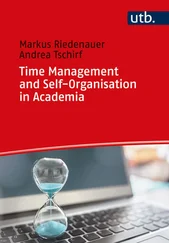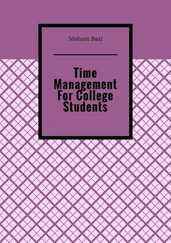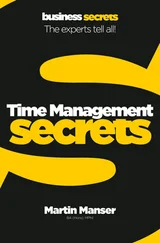Thomas Limoncelli - Time Management for System Administrators
Здесь есть возможность читать онлайн «Thomas Limoncelli - Time Management for System Administrators» весь текст электронной книги совершенно бесплатно (целиком полную версию без сокращений). В некоторых случаях можно слушать аудио, скачать через торрент в формате fb2 и присутствует краткое содержание. Жанр: Старинная литература, на английском языке. Описание произведения, (предисловие) а так же отзывы посетителей доступны на портале библиотеки ЛибКат.
- Название:Time Management for System Administrators
- Автор:
- Жанр:
- Год:неизвестен
- ISBN:нет данных
- Рейтинг книги:4 / 5. Голосов: 1
-
Избранное:Добавить в избранное
- Отзывы:
-
Ваша оценка:
- 80
- 1
- 2
- 3
- 4
- 5
Time Management for System Administrators: краткое содержание, описание и аннотация
Предлагаем к чтению аннотацию, описание, краткое содержание или предисловие (зависит от того, что написал сам автор книги «Time Management for System Administrators»). Если вы не нашли необходимую информацию о книге — напишите в комментариях, мы постараемся отыскать её.
Time Management for System Administrators — читать онлайн бесплатно полную книгу (весь текст) целиком
Ниже представлен текст книги, разбитый по страницам. Система сохранения места последней прочитанной страницы, позволяет с удобством читать онлайн бесплатно книгу «Time Management for System Administrators», без необходимости каждый раз заново искать на чём Вы остановились. Поставьте закладку, и сможете в любой момент перейти на страницу, на которой закончили чтение.
Интервал:
Закладка:
Of course, when I get to work I discover that my organizer actually was at home. Now I have to spend the day without it. To do list items get confused, appointments are missed—it's awful.
To help me develop this routine I found an excellent mantra to use:
If I ask "Should I bring my organizer?" the answer is "Yes."
That has a domino effect that works well. When I'm leaving work, I know to take my organizer. When I'm leaving for work, if my organizer isn't in my car, I know I have to go into the house to find it. Since I always take it with me, I know I couldn't possibly have left it at work the night before.
This is why in 14 years I've lost my organizer only once. Every time I leave a room, go home from work, get into a car, get out of a car—everywhere I go—I know I should have my organizer in my hand. Because of this absolute consistency, the habit was able to develop very quickly and indelibly in my mind. Sometimes we misplace things because we lose track of them. We put an item down, and later we leave the room without it because we aren't in the habit of taking it with us all the time. Because we don't always have our organizer with us, our brain rationalizes that it's OK that we don't have it with us right now . I have developed a habit, almost a tactile addiction, to having that organizer in my hand.
Warning
The one time I lost my organizer I was in a rush and was distracted by having to carry many things at once. I would like to point out that the limo company returned my organizer by overnight air the next day. I was very lucky.
What are the things that you find yourself without? Why don't you carry them with you all the time?
Take a moment to consider the following items that might be easier to always have with you than to waste brainpower on deciding whether you should bring them along:
Your PDA or PAA
Your cell phone and/or pager
A pen
Your wallet, purse, etc.
ID cards
Keys (metal and electronic)
Your medical ID cards, insurance information, etc.
A laptop (for some people)
Oh, sure, let them laugh at you for wearing a pocket protector. We know the value of always having a pen on hand.
Routine #3: Regularly Meet with My Boss
I need "face time" with my boss. I like to be independent, but that has its limits. Scheduling meetings with my boss is a major time investment. If I add up all the bits of time I spend Instant Messaging her, talking to her secretary, and so on, it can take me 30 minutes to arrange for 15 minutes of time with my boss. That's just crazy.
So instead, we've agreed to meet or speak on the phone every Tuesday at 10 a.m., whether we need to or not. Now that 15 minutes takes zero time to arrange.
You might want to do something similar with your boss, especially if you don't feel you get to talk with your boss enough. Five minutes of status updates every day at 9 a.m. can be more useful to you, and less annoying to him, than grabbing him throughout the day.
Oddly enough, this also helps if your boss says you require too much of his attention. If half your attempts to see your boss are just to schedule time for larger discussions, it might be better to have a regularly scheduled meeting time with him. It consolidates the meetings.
Routine #4: The Check-In-with-Staff Walk-Around
There was a time at Bell Labs when I managed 15 other system administrators. I wanted to be a hands-off manager—the other SAs were all smart, hardworking, and independent. I mostly left everyone alone. However, I soon learned that they felt ignored. I needed to spend more time with them.
If You Have to Ask, the Answer Is "Yes"
Over the years, I've decided the answer to these questions is always "yes." I can now stop wasting brainpower trying to make a decision each time the issue comes up.
Would this be a good time to save the file I'm working on?
Should I take my organizer with me (versus leaving it here)?
Should I add this to my to do list?
Should I check my calendar before I agree to this appointment?
Should I write this on my calendar?
Should I check to see whether I have plans after work before I agree to stay late?
Should I check to see whether I have any early appointments before I decide to play one more game of Half Life this morning?
Should I do The Cycle today (versus slacking off)?
Should I fill my car's gas tank now (versus procrastinating until it is an emergency)?
Should I do this small task or chore now (versus procrastinating and hoping nobody notices or the task doesn't turn into an emergency)?
The answer to all of these questions is "yes." This list was developed over 10 painful years of getting into trouble (in small and big ways) by thinking about the question, weighing the benefits of both choices, and making a thoughtful but wrong decision. I was trying to be smart. It took me a long time to realize, "Stop thinking! The answer is 'yes!'" Don't weigh the issues; don't waste brainpower making a decision; don't convince yourself that just this one time things will be different! If you have to ask yourself the question, the answer is "Yes!"
In most cases, it takes longer to make a decision about a task than to do the task. Opening up my PDA and checking my calendar takes 10 seconds, but I can spend just as much time rationalizing that today my memory is good enough to not need to check.
Many of those questions are equivalent to asking, "Should I trust my memory or my organizer's memory?" We already know that our memory is faulty; otherwise, we wouldn't be using an organizer, right? Use it!
It took me nearly 10 years to develop a rule for each of those questions, and, by amazing coincidence, for each of them the answer was the same. Save yourself many painful experiences and believe me: the answer is "Yes!"
However, scheduling mini meetings with 15 people would have taken longer than the meetings themselves and wouldn't have worked in the chaotic environment of system administration. Therefore, every Monday and Thursday at 9 a.m., I would do my "walk-around." I would walk a particular path that went by each person's office. Their offices were, essentially, in three different clusters, so it was almost like having three mini status meetings. I would stop in, say "hello," and this would present them with an opportunity to bring up issues.
It would take me half a day to do this, but it was a really good opportunity to troubleshoot problems in real time, remove roadblocks, and solve the problem of people feeling ignored.
Our weekly staff meeting was on Tuesday morning. The Monday walk-around usually resolved a lot of issues that would normally tie up the Tuesday meeting, so we reduced the time allotted to our staff meetings. Shorter meetings are cool.
I was surprised at how well it worked. I was also surprised that anyone noticed. Alas, one day I was walking towards a cluster of offices, and I overheard someone saying, "Here comes Tom for his Thursday visit," followed by a little laughter.
OK, they were mocking me. Did I change? Did I vary the schedule to be less predictable and obvious? No. I'm too thickheaded for that.
However, I did notice that over time my staff started planning their schedule around my walks. Sometimes I would arrive and they'd have a list of issues on the whiteboard ready to discuss.
Here are two takeaways from this story:
Develop a routine that solves your problems.
Perform the routine on a predictable schedule, and others will plan their schedules around you.
Routine #5: The Check-In-with-Customers Walk-Around
If you are supporting a number of people who are in the same building as you, you can increase customer satisfaction by doing a walk-around once a day to visit customers, talk with them, answer questions, fix problems as you see them, record bigger problems to be worked on later, and so on. If anything, it develops a better rapport with your customers. That alone is very valuable.
Читать дальшеИнтервал:
Закладка:
Похожие книги на «Time Management for System Administrators»
Представляем Вашему вниманию похожие книги на «Time Management for System Administrators» списком для выбора. Мы отобрали схожую по названию и смыслу литературу в надежде предоставить читателям больше вариантов отыскать новые, интересные, ещё непрочитанные произведения.
Обсуждение, отзывы о книге «Time Management for System Administrators» и просто собственные мнения читателей. Оставьте ваши комментарии, напишите, что Вы думаете о произведении, его смысле или главных героях. Укажите что конкретно понравилось, а что нет, и почему Вы так считаете.












